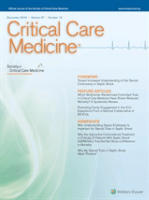
CRITICAL CARE MEDICINE
Scope & Guideline
Driving Excellence in Critical Care Research
Introduction
Aims and Scopes
- Clinical Management of Critical Illness:
The journal covers a wide range of topics related to the clinical management of critically ill patients, including advanced monitoring, therapeutic interventions, and innovative care pathways. - Sepsis and Infection Management:
A significant focus is placed on the management of sepsis, including early recognition, treatment protocols, and the role of biomarkers in diagnosis and prognosis. - Respiratory Support and Ventilation Strategies:
Research on various ventilation strategies, including non-invasive ventilation, high-flow nasal cannula, and ECMO, is prevalent, emphasizing improved oxygenation and patient outcomes. - Multidisciplinary Approaches to Care:
The journal emphasizes collaborative care models involving interdisciplinary teams to enhance patient management and support systems in critical care settings. - Psychosocial Aspects of Critical Care:
Articles exploring the psychological impacts on both patients and families during and after critical illness, including post-intensive care syndrome and bereavement support. - Quality Improvement Initiatives:
The journal publishes studies focused on quality improvement measures in ICU settings, aiming to enhance patient safety, reduce complications, and improve care delivery. - Technological Innovations in Critical Care:
Research exploring the integration of technology such as telemedicine, machine learning, and point-of-care ultrasound in critical care practice.
Trending and Emerging
- Machine Learning and Predictive Analytics:
There is a growing trend towards utilizing machine learning algorithms and predictive analytics to improve patient outcomes, particularly in sepsis management and risk stratification. - Telemedicine and Remote Monitoring:
The incorporation of telemedicine and remote monitoring technologies has gained traction, especially in response to the COVID-19 pandemic, highlighting its role in enhancing patient care and safety. - Integrated Care Models:
Emerging research emphasizes integrated care models that focus on the continuum of care from ICU to post-acute settings, aiming to improve long-term outcomes for survivors of critical illness. - Patient-Centered Approaches:
A notable trend is the shift towards patient-centered care models, which consider the preferences and values of patients and their families in treatment decisions. - Diversity and Equity in Critical Care:
There is an increasing focus on addressing health disparities and promoting equity in critical care, reflecting a broader societal push towards inclusivity in healthcare. - Psychosocial Interventions in Critical Care:
Research into the psychological well-being of both patients and healthcare providers is on the rise, particularly in understanding the impacts of critical illness and the care environment. - Novel Therapeutic Agents and Protocols:
Emerging therapies, particularly in the context of COVID-19, are becoming a significant area of interest, with studies focusing on the efficacy of new pharmacological agents and treatment protocols.
Declining or Waning
- Traditional Sedation Practices:
There is a noticeable decline in research focusing solely on traditional sedation practices, as the field shifts towards more nuanced approaches that incorporate multimodal analgesia and sedation strategies. - Single-Agent Pharmacotherapy in Critical Care:
Research on the efficacy of single-agent pharmacotherapy appears to be waning as studies increasingly explore combination therapies and personalized medicine approaches. - Basic Ventilation Techniques:
The focus on basic mechanical ventilation techniques has decreased, with more emphasis being placed on advanced strategies such as adaptive ventilation and individualized care protocols. - General ICU Protocols:
There is a reduction in studies examining general ICU protocols, as more research is directed towards specific populations and tailored interventions based on patient characteristics. - Efficacy of Colloids in Resuscitation:
Research on the use of colloids for fluid resuscitation is less frequent, possibly due to evolving guidelines favoring crystalloids and the need for more evidence-based approaches.
Similar Journals

INTENSIVE CARE MEDICINE
Elevating Standards in Intensive Care ResearchINTENSIVE CARE MEDICINE is a premier academic journal in the field of critical care and intensive care medicine, published by SPRINGER. With an impressive HIndex and a remarkable impact factor, this journal consistently ranks in the top quartile of its category, achieving Q1 status for 2023. Spanning over four decades since its inception in 1977, it serves as a crucial platform for disseminating groundbreaking research and clinical advancements that shape the future of intensive care. Notably, it holds a distinguished position in the Scopus rankings, placed #1 out of 110 in its field, reflecting its importance and influence among researchers and clinicians alike. Although it is not an open-access journal, it offers various subscription options, ensuring wide accessibility to its high-quality content. The journal is dedicated to enhancing knowledge and practices within the critical care community, making it an indispensable resource for practitioners, researchers, and students pursuing excellence in intensive care medicine.

Anesteziologie a Intenzivni Medicina
Pioneering Research for Patient-Centric CareAnesteziologie a Intenzivni Medicina is a pivotal Czech journal dedicated to the fields of anesthesiology, critical care, and intensive medicine. Published by SOLEN SRO, this journal plays a crucial role in disseminating essential research and advancements in these vital areas of medicine. With the ISSN 1214-2158 and E-ISSN 1805-4412, it has been in publication since 2003, showcasing a wealth of knowledge that is particularly relevant to the clinical practices in the Czech Republic and beyond. Although currently classified in the Q4 quartile for both anesthesiology and critical care disciplines, the journal is committed to fostering high-quality research and clinical discussions. Researchers and healthcare professionals can benefit from its content that encompasses various aspects of patient care and procedural developments. This journal is a valuable resource for those aiming to stay updated within the fast-evolving landscape of anesthesiology and intensive medicine, despite its limited open access options. As it progresses towards its 2024 convergence year, Anesteziologie a Intenzivni Medicina strives to elevate its impact and relevance in the medical community.

Intensive Care Medicine Experimental
Advancing Critical Care through Innovative ResearchIntensive Care Medicine Experimental is a premier open-access journal dedicated to advancing research and clinical practice within the realms of critical care, intensive care medicine, and emergency medicine. Published by SPRINGER, this influential journal has been committed to dispensing high-quality, peer-reviewed research since its inception in 2013, reflecting its progressive approach to open-access publishing and enhancing global accessibility to vital medical information. With a notable impact factor and categorically established Q1 rankings in both Critical Care and Emergency Medicine, as well as Q2 in Physiology (medical), the journal underscores its significance in disseminating groundbreaking studies and innovations. Positioned prominently within the medical literature, Intensive Care Medicine Experimental ranks 16th in Emergency Medicine and 27th in Critical Care, providing a vital platform for researchers, clinicians, and students alike to explore and share cutting-edge research findings that aim to improve patient outcomes. The journal's dedication to fostering collaboration and dialogue among professionals makes it an essential resource in the evolving landscape of intensive care and emergency medical disciplines.
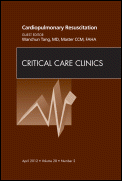
CRITICAL CARE CLINICS
Bridging Theory and Practice in Critical MedicineCRITICAL CARE CLINICS is a premier academic journal published by W B SAUNDERS CO-ELSEVIER INC, focusing on advancing knowledge in the fields of Critical Care and Intensive Care Medicine. With an impressive impact factor and designated as Q1 in both Critical Care and Intensive Medicine categories, this journal is a leading resource for healthcare professionals, researchers, and students alike. Since its establishment in 1985, it has evolved into an essential conduit for cutting-edge research, clinical insights, and evidence-based practices, bridging the gap between theoretical understanding and practical application in critical care. The journal maintains a high ranking, being positioned 15th of 110 in its category according to Scopus, with a noteworthy percentile of 86, indicating its influence and relevance in contemporary medical discourse. Although the journal is not open access, it provides valuable content for those dedicated to enhancing patient care and advancing the science of critical medicine. Its commitment to excellence makes it a vital resource for anyone engaged in the dynamic field of critical care.
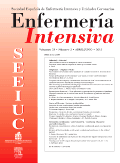
Enfermeria Intensiva
Enhancing Outcomes in Critical Care NursingEnfermeria Intensiva, published by Elsevier Science Inc, is a highly regarded journal in the fields of Advanced and Specialized Nursing as well as Critical Care and Intensive Care Medicine. With an impressive track record spanning from 1994 to 2024, this journal serves as a vital resource for researchers, healthcare professionals, and students dedicated to enhancing the quality of patient care in critical settings. It holds a coveted Q2 ranking in multiple nursing categories as of 2023, reflecting its influence and contribution to the ongoing discourse in nursing practices. Although currently not an open access journal, it continues to provide intricate insights into both fundamental skills and specialized techniques essential in intensive nursing care. By bridging research and practical application, Enfermeria Intensiva plays a pivotal role in advancing knowledge and improving outcomes in critical care environments.
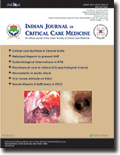
Indian Journal of Critical Care Medicine
Exploring Emerging Trends in Critical Care MedicineIndian Journal of Critical Care Medicine is a premier platform dedicated to advancing knowledge in the vital fields of Critical Care and Intensive Care Medicine. Published by JAYPEE BROTHERS MEDICAL PUBLISHERS PVT LTD, this journal has been a crucial resource since its inception in 2004, and it continues to play a significant role in disseminating groundbreaking research and clinical practices. With an impressive Scopus rank of #42 out of 110 and a 62nd percentile in its category, the journal is recognized for its quality and relevance within the medical community, achieving a Q2 category ranking in Critical Care and Intensive Care Medicine for the year 2023. Although not open-access, it provides essential insights tailored for researchers, healthcare professionals, and students alike, focusing on emerging trends, innovative techniques, and comprehensive reviews that enrich the discourse in critical care. By bridging gaps in knowledge and practice, the Indian Journal of Critical Care Medicine serves as an indispensable resource for those committed to improving patient outcomes in the ever-evolving landscape of critical care.
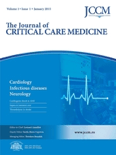
Journal of Critical Care Medicine
Connecting experts to advance the future of critical care.The Journal of Critical Care Medicine, published by SCIENTO, is a pioneering open-access journal dedicated to advancing the field of critical care, emergency medicine, anesthesiology, and pulmonary medicine. Since its inception in 2015, this journal has made significant strides in fostering knowledge dissemination and scholarly communication within the medical community. With an ISSN of 2393-1809 and an E-ISSN of 2393-1817, it provides a platform for high-quality research that impacts clinical practices and improves patient outcomes. Currently ranked in the second and third quartiles across multiple categories such as Critical Care and Intensive Care Medicine, and Emergency Medicine, the journal’s impact is underlined by its inclusion in prestigious databases like Scopus. The journal’s commitment to open-access publishing ensures that vital research is accessible to a wider audience, enriching the global dialogue in critical care practices. Researchers, healthcare professionals, and students seeking to remain at the forefront of this rapidly evolving field will find an invaluable resource in the Journal of Critical Care Medicine.

AMERICAN JOURNAL OF EMERGENCY MEDICINE
Elevating Standards in Emergency Medical ResearchThe American Journal of Emergency Medicine, published by W B Saunders Co-Elsevier Inc, stands as a premier platform for the dissemination of high-quality research in the field of emergency medicine. With the ISSN 0735-6757 and E-ISSN 1532-8171, this esteemed journal features contributions that shape clinical practices and enhance patient care in urgent medical scenarios. Since its inception in 1983, the journal has garnered a notable Q1 ranking in Emergency Medicine and a Q2 ranking in Medicine (miscellaneous) for 2023, reflecting its significant impact in the field, as denoted by its Scopus rank of 12 out of 109, placing it in the 89th percentile. Researchers and practitioners alike benefit from the rigorous peer-review process, ensuring that only impactful studies are published, even as the journal maintains a non-open access model, allowing for selective availability of pioneering research. By fostering academic dialogue and advancing knowledge, the American Journal of Emergency Medicine plays a crucial role in addressing the dynamic challenges faced by healthcare professionals in emergency settings.

Notarzt
Bridging gaps in knowledge for improved patient outcomes.Notarzt is a well-regarded academic journal published by GEORG THIEME VERLAG KG, focusing on critical care, intensive care medicine, and emergency medicine. With an ISSN of 0177-2309 and an E-ISSN of 1438-8693, this German-based journal has been contributing to the medical field since its inception in 1985. Despite being categorized in the Q4 quartile for both Critical Care and Intensive Care Medicine and Emergency Medicine, Notarzt continues to provide a platform for innovative research, case studies, and developments that inform practitioners and researchers alike. With a publication history spanning significant years such as 1993 and 1999 to 2024, Notarzt is dedicated to improving outcomes in emergency and critical care settings through the dissemination of pivotal findings and comprehensive reviews. Although currently not an Open Access journal, it remains an essential resource for professionals striving to stay abreast of developments in their field.

Turkish Journal of Intensive Care-Turk Yogun Bakim Dergisi
Fostering Global Collaboration in Critical Care PracticesThe Turkish Journal of Intensive Care (Turk Yogun Bakim Dergisi), published by GALENOS PUBL HOUSE, is a premier, peer-reviewed open access journal dedicated to advancing the field of intensive care medicine. With its ISSN 2602-2974 and E-ISSN 2602-2974, this journal has been committed to providing high-quality research and clinical insights since its inception in 2002. The journal serves as a vital platform for professionals and researchers to disseminate innovative findings, explore emerging therapies, and discuss critical care practices, thereby contributing to enhanced patient outcomes in intensive care settings. Based in Istanbul, Turkey, it aims to foster an international dialogue among medical practitioners, researchers, and academicians dedicated to intensive care, ultimately contributing to the global body of knowledge in this crucial area of health care.